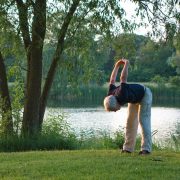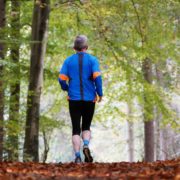Two Reasons People Avoid Exercise Over Age 50
Should you truly “avoid exercise” once you’re over 50?
Over the course of my career, I’ve worked with many folks over the age of 50 who are enjoying the same activities they did in their 40’s – including surfing, playing tennis, hockey, running, hiking, etc. – so the short answer is “No”. None of these activities are considered “easy on the joints” – and yes, you might have to make some modifications to continue enjoying them – but you certainly don’t have to avoid exercise if you don’t want to.
So why is it that some folks see age as just a number, whereas others see age as a time to slow down and stop doing certain things?
Once you’re over 50, the two most common reasons I see people avoiding activities they love is because
1) they fear pain could be causing damage to their body and
2) they were simply told to by a medical professional.
1. Fear that pain could be causing damage
When it comes to musculoskeletal pain, the pain itself is typically not the biggest concern for most. People are willing and able to tolerate a certain amount of pain at the expense of doing what they truly love. We do it all the time in our 20’s or 30’s. But as we age, fear starts to set in when we’re in pain. We naturally become more cautious with activity and begin to question what the pain could be doing to our bodies. Plus, as you get older, it becomes harder to recover from injuries, leading some to rationalize for themselves that it’s better to just avoid certain activities altogether because it’s “safer” than getting injured.
So does pain mean we’re doing damage? Not necessarily. Pain is simply a signal from your brain that it wants you to pay attention to something. You shouldn’t ignore it, but you don’t have to fear it either. Oftentimes, pain just means you might have to adjust or modify something. Once you understand what your pain is telling you – you can take appropriate action. This is one of the secrets to being able to continue your favorite activities well beyond your 50’s. Learn how to “talk” to your pain.
2. A medical professional told you to avoid exercise
When we’re younger, we’re more likely to address pain with a wait-and-see approach. But as we age, pain becomes a bigger concern and we’re more likely to seek professional medical help sooner. While this would seem prudent, the problem is there are a lot of well-meaning medical professionals out there who aren’t always up to date with the latest research. The consequence? Mixed messages and “old school” advice for many of their patients.
For example, many doctors have come to rely on images (X-rays and MRI’s) to base their diagnosis of musculoskeletal pain and subsequent treatment plan/recommendations. If your X-ray shows “bone on bone” arthritis, they start talking about joint replacements – and/or tell you to stop doing any activity that could “damage” your joint further. But the current research disputes this line of thinking, and says 70-80% of all musculoskeletal problems (even when you’re over 50) can be solved without a procedure or surgery. How your pain behaves is what matters most. Not your age, arthritis, or images.
Here’s a real life case study that illustrates what I’m talking about.
Not too long ago, I met a 55-year-old woman (we’ll call her Kate). She was having knee pain that interfered with her hiking and running. She was told by her orthopedic surgeon that knee replacement was her only option. This was because of the “bone-on-bone” in her knee. Kate questioned the knee replacement and asked if she could wait. Her doctor’s response was to scale back on activity and stop running and hiking altogether. But just because Kate’s X-ray showed osteoarthritis in her knee, it doesn’t mean it’s the cause of her knee pain. Research tells us this. It’s entirely possible that Kate’s knee pain is due to something other than her “bone on bone” arthritis.
Did she really need surgery? And did she really need to stop running and hiking? If she underwent a knee replacement without being sure if arthritis is truly the main cause of her knee pain, she not only risks unnecessary surgery, but would also be set back several months for recovery.
First, inactivity is one of the worst things you can do for arthritis.
People who stay active with weight-bearing activities are shown to have less arthritis than those who avoid doing things that compress their joints. Second, during Kate’s movement exam, we were able to quickly turn her knee pain “off” and then “on” again. That means her knee pain could not be solely due to the arthritis in her knee – because you can’t reverse “bone on bone” arthritis with movement and certainly not that quickly.
You can, however, successfully address a mechanical joint problem with movement – which is exactly what was happening. Mechanical problems in your spine or joints won’t show up on X-ray. So you don’t want to rely on images alone to make decisions about your pain – and certainly don’t rely on images alone to decide if you should have surgery or not.
If you’re getting older, know that age related changes like arthritis are normal and nothing to be afraid of. Pain is also normal. It’s an important signal that alerts us to take action. It doesn’t always equal damage. Be sure to educate yourself about these topics and ask more questions if you’re told to stop an activity “just because”, or that surgery is your only option because of an image.
Do you avoid exercise because of back, knee, hip, shoulder, or ankle pain?
Let us help you get back to it! Request a FREE Discovery Call with my team. It’s a no obligation call to figure out 1) if we can help you and 2) are you a good fit for what we do.
Dr. Carrie Jose, Physical Therapist and Pilates expert, owns CJ Physical Therapy & Pilates in Portsmouth and writes for Seacoast Media Group. To request a free copy of her Knee Pain Free Report CLICK HERE or to get in touch email her at [email protected] .



